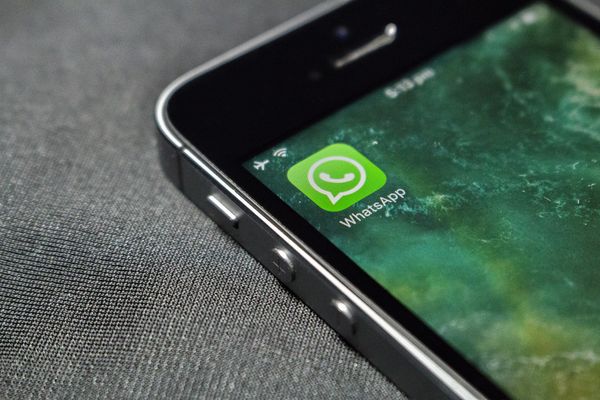In 2016, growing IoT comes with new opportunities - and new threats

The Internet of Things is becoming a bigger part of consumers’ daily lives, thanks in large part to smart phones with larger screens that people use to control smart devices, according to the latest Digital Trends Report from Adobe Digital Index. Many companies and experts predict 2016 will be a big year for the Internet of Things, or IoT – which is how we call the Internet-connected stuff in our lives, from smart thermostats to Internet-connected cars.
But with opportunities come risks, and a larger presence of IoT in people’s lives will also potentially bring new problems in terms of everyday functionality and security. Researchers and industry leaders are asking governments to come up with national strategies to allow the IoT to develop, skeptics are drawing attention to the bugs that may plague Internet-connected devices, and experts warn that networks of machines talking to each other are more attractive targets for cybercriminals.
The Internet of Things offers many opportunities to grow the economy and improve quality of life,” wrote Joshua New, a policy analyst at the Center for Data Innovation, which has recently released a report (PDF) calling on governments to adopt strategies to ensure the success of the IoT. The report argues that many requirements and restrictions imposed by governments in relation to the Internet don’t make sense when it comes to the Internet of Things, and, more over, would actually hinder its development.
For example, “it would be damaging to apply existing notification and consent rules to devices that gather consumer data on the Internet to the Internet of Things,” reads the report, as many connected devices have limited or no user interfaces. Most IoT applications “pose no real threat to consumer welfare and most data collection would likely be routine and insignificant.”
The report also notes that some nations restrict (or want to restrict) how data can flow across borders, which limits “the ability of international device manufacturers and service providers to analyze data collected from the Internet of Things around the world, thereby reducing the technology’s potential value.
The authors seem to think that dangers to privacy from machines collecting data about their owners are minimal, but others might disagree. And privacy concerns are only part of the issue. Tech companies may want you to believe in a shiny and intelligent future where Internet-connected machines make your life better, but the IoT is prone to all kinds of troubles, according to Motherboard, a publication focused on science and technology which is part of the Vice network: “What they don’t tell you is that as we put software into old-fashioned home appliances, there will be bugs that’ll make those appliances useless.”
Lorenzo Franceshi-Bicchierai of Motherboard interviewed the anonymous man behind “Internet of Shit”, a Twitter account with dozens of thousands of followers that looks at the Internet of Things with a rather skeptical eye. The account makes fun of the IoT in a way that should make people realize that not all things should necessarily be connected to the Internet, and that a “smart” device can become a nuisance due to everyday mishaps – such as the Internet not working. Just an example of the humor displayed by the guy behind the Twitter account: imagine a smart device blackmailing you with the message: “We saw what you did in the living room. Would you like to delete the footage for $9.99?”
Rogue IoT devices may be just the stuff of jokes for now (and movies, as evil computer Hal 9000 comes to mind). But there are already some very palpable dangers. Electric grids around the globe, for example, are set to increasingly come under stress as society becomes more and more digitized, according to energy consultant Peter Kelly-Detwiler.
Today, there are some 200 billion ‘things’ in the world, with about 20 billion of them currently connected and communicating,” according to Kelly-Detwiler, cited by USA Today. He expects the number to reach 30 billion by 2020.
Security experts are worried about other kinds of threats. “The ever-increasing number of devices or ‘things’ being connected throughout Smart Cities and across the ‘Internet of Things’ will make embedded devices and machine-to-machine networks more attractive targets,” according to the annual industry trends analysis and predictions report for 2016 from Allied Telesis, cited by ITWire.
As embedded autonomous devices take over many functions of critical infrastructure systems that so far have been performed by human-operated machines, the report says, security of these systems bill become increasingly important.
On the consumer side, security for IoT has already become a big issue. A recent survey found that 52 percent of consumers familiar with IoT believe Internet-connected devices lack the necessary security. Developers are even more worried – around 90 percent felt IoT security was insufficient.
According to Jon Gelsey, CEO of Auth0, the company that conducted the survey, “trust in IoT devices is at a low-point, which in turn is slowing innovation and adoption of these new technologies.”
What’s to be done to ensure connected devices stay safe from Internet threats? In December, just in time for the holiday shopping season, the Online Trust Alliance released a “Smart Device Purchase & Setup Checklis” (PDF) – or an “Internet Of Things Christmas Security Survival Guide“ as darkreading.com put it. Among other things, it advised buyers to check the security and privacy practices of the manufacturer, to disable or protect remote access to their connected devices when not needed to reduce the risk of hacking, and to use a firewall to prevent unauthorized access.
For those who want comprehensive IoT protection without headaches, Bitdefender, a global cybersecurity leader known for its innovative solutions, offers one little piece of hardware that promises to guard all your home’s connected devices – even those that you take with you on the road. BOX from Bitdefender works as a security hub for your Wi-fi network that can be configured from an iOS or Android app. You’ll just need to set up your BOX, and all your devices will be protected, regardless of platform, whether they sport a user interface or not.
The Bitdefender BOX is the first product we’ve seen that actually tries to protect everything, including the devices of visiting guests,” wrote PC Mag. It also uses VPN technology to extend malware protection to the family’s Mac, Windows and iOS devices when they are outside the range of the home Wi-fi.
The BOX is available for now just for the US market, where for a limited time you can get the device for free, paying just the $99 annual subscription.
tags
Author

The meaning of Bitdefender’s mascot, the Dacian Draco, a symbol that depicts a mythical animal with a wolf’s head and a dragon’s body, is “to watch” and to “guard with a sharp eye.”
View all postsRight now Top posts
Start Cyber Resilience and Don’t Be an April Fool This Spring and Beyond
April 01, 2024
Spam trends of the week: Cybercrooks phish for QuickBooks, American Express and banking accounts
November 28, 2023
FOLLOW US ON SOCIAL MEDIA
You might also like
Bookmarks








